
Tutor Perini Corp
NYSE:TPC
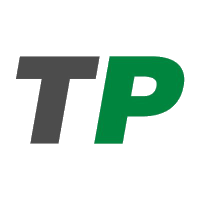

| US |

|
Fubotv Inc
NYSE:FUBO
|
Media
|
| US |

|
Bank of America Corp
NYSE:BAC
|
Banking
|
| US |

|
Palantir Technologies Inc
NYSE:PLTR
|
Technology
|
| US |
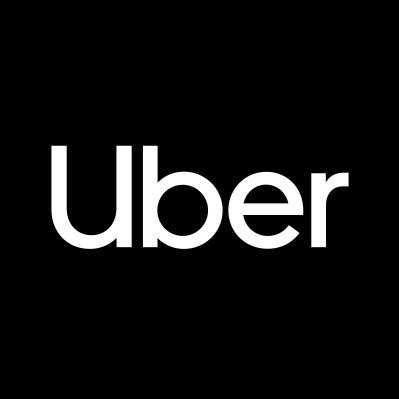
|
Uber Technologies Inc
NYSE:UBER
|
Road & Rail
|
| CN |

|
NIO Inc
NYSE:NIO
|
Automobiles
|
| US |

|
Fluor Corp
NYSE:FLR
|
Construction
|
| US |

|
Jacobs Engineering Group Inc
NYSE:J
|
Professional Services
|
| US |

|
TopBuild Corp
NYSE:BLD
|
Consumer products
|
| US |
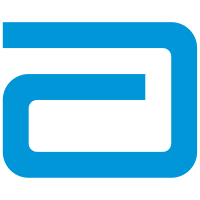
|
Abbott Laboratories
NYSE:ABT
|
Health Care
|
| US |

|
Chevron Corp
NYSE:CVX
|
Energy
|
| US |
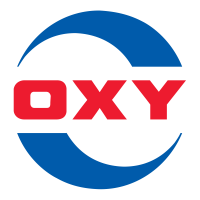
|
Occidental Petroleum Corp
NYSE:OXY
|
Energy
|
| US |

|
Matrix Service Co
NASDAQ:MTRX
|
Construction
|
| US |
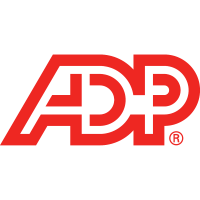
|
Automatic Data Processing Inc
NASDAQ:ADP
|
Technology
|
| US |

|
Qualcomm Inc
NASDAQ:QCOM
|
Semiconductors
|
| US |

|
PayPal Holdings Inc
NASDAQ:PYPL
|
Technology
|
| US |

|
Ambarella Inc
NASDAQ:AMBA
|
Semiconductors
|
Utilize notes to systematically review your investment decisions. By reflecting on past outcomes, you can discern effective strategies and identify those that underperformed. This continuous feedback loop enables you to adapt and refine your approach, optimizing for future success.
Each note serves as a learning point, offering insights into your decision-making processes. Over time, you'll accumulate a personalized database of knowledge, enhancing your ability to make informed decisions quickly and effectively.
With a comprehensive record of your investment history at your fingertips, you can compare current opportunities against past experiences. This not only bolsters your confidence but also ensures that each decision is grounded in a well-documented rationale.
Do you really want to delete this note?
This action cannot be undone.

| 52 Week Range |
7.07
30.66
|
| Price Target |
|
We'll email you a reminder when the closing price reaches USD.
Choose the stock you wish to monitor with a price alert.

|
Fubotv Inc
NYSE:FUBO
|
US |

|
Bank of America Corp
NYSE:BAC
|
US |

|
Palantir Technologies Inc
NYSE:PLTR
|
US |

|
Uber Technologies Inc
NYSE:UBER
|
US |

|
NIO Inc
NYSE:NIO
|
CN |

|
Fluor Corp
NYSE:FLR
|
US |

|
Jacobs Engineering Group Inc
NYSE:J
|
US |

|
TopBuild Corp
NYSE:BLD
|
US |

|
Abbott Laboratories
NYSE:ABT
|
US |

|
Chevron Corp
NYSE:CVX
|
US |

|
Occidental Petroleum Corp
NYSE:OXY
|
US |

|
Matrix Service Co
NASDAQ:MTRX
|
US |

|
Automatic Data Processing Inc
NASDAQ:ADP
|
US |

|
Qualcomm Inc
NASDAQ:QCOM
|
US |

|
PayPal Holdings Inc
NASDAQ:PYPL
|
US |

|
Ambarella Inc
NASDAQ:AMBA
|
US |
This alert will be permanently deleted.
 Tutor Perini Corp
Tutor Perini Corp
Earnings Call Analysis
 Q2-2024 Analysis
Tutor Perini Corp
Q2-2024 Analysis
Tutor Perini Corp
In the second quarter of 2024, Tutor Perini Corporation achieved a robust 10% revenue growth, with total revenues reaching $1.13 billion, up from $1.02 billion in the same quarter last year. This increase was primarily driven by higher activity levels in the Building segment, notably due to various healthcare and educational projects in California and the Brooklyn jail project in New York. Although the Civil segment saw stable revenue of $546 million, it is worth noting that year-to-date, Civil revenue increased by 13% compared to the first half of 2023.
The reported net income of $800,000, or earnings per share of $0.02, comes despite challenges that affected earnings by $0.36 per share. This was largely due to a significant increase in share-based compensation—up $14.3 million—driven by the company's rising stock price, along with a $12.4 million unfavorable adjustment from settled highway projects in the Northeast. Such variances exemplify how operational changes and market conditions can significantly affect earnings.
Operating cash flow for the second quarter was a strong $53.1 million, totaling $151 million for the first half of 2024—the second-best performance since 2008. This robust cash generation allowed Tutor Perini to reduce its total debt by $223 million or 25% this year, bringing the total to $676 million. The management is committed to continued debt reduction, suggesting additional financial flexibility moving forward.
Tutor Perini's backlog reached $10.4 billion by the end of the second quarter, indicating healthy demand for its services. The company expects this backlog to grow substantially as they bid for and win large-scale projects, such as the $1.3 billion Connecticut River bridge project and several significant contracts in California. The company expressed optimism about capturing its fair share of upcoming mega projects due to a limited competition environment.
Looking to the forecast, the management reaffirmed its guidance of earnings per share for 2024 to be in the range of $0.85 to $1.10. With expectations for a stronger second half due to project ramp-ups and the resolution of legacy disputes, Tutor Perini is poised for solid revenue growth and improved earnings in the coming years. The leadership expects to see significantly higher earnings in 2025 and 2026, targeting a backlog that could exceed the previous record of $11.6 billion.
Despite overall positive results, Tutor Perini faces ongoing challenges with its Specialty Contractors segment, reporting a loss of $8 million but an improvement compared to last year's $70 million loss. The ongoing issues stem from legacy contracts, particularly within the Five Star Electric subsidiary. Management anticipates gradual improvement as new projects come online, although full recovery may not materialize until late next year.
The overall sentiment from management is optimistic, bolstered by significant bidding activity in a favorable market with limited contractors available for large-scale projects. The strategic positioning of Tutor Perini suggests a solid probability of winning future contracts, thereby enhancing shareholder value and operational margins. The company’s proactive measures in managing costs and optimizing contract terms continue to reflect a commitment to profitability and investor confidence.





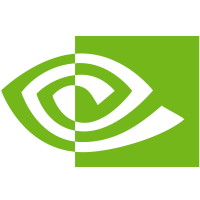
 You don't have any saved screeners yet
You don't have any saved screeners yet

Good day, ladies and gentlemen, and welcome to the Tutor Perini Corporation Second Quarter 2024 Earnings Conference Call. My name is Latanya, and I will be your coordinator for today. [Operator Instructions] As a reminder, this conference is being recorded for replay purposes. [Operator Instructions]
I would now like to turn the conference over to your host for today, Mr. Jorge Casado, Vice President of Investor Relations. Please proceed.
Hello, everyone, and thank you for your time and participation today. With us on the call are Ronald Tutor, Chairman and CEO; Gary Smalley, President; and Ryan Soroka, Senior Vice President and CFO.
Before we discuss our results, I will remind everyone that during this call, we will be making forward-looking statements, which are based on management's current assessment of existing trends and information. There is an inherent risk that our actual results could differ materially. You can find our disclosures about risk factors that could potentially contribute to such differences in our Form 10-K, which we filed on February 28, 2024, and in our Form 10-Q that we are filing today. The company assumes no obligation to update forward-looking statements, whether due to new information, future events or otherwise, other than as required by law. Thank you. And with that, I will turn the call over to Ronald Tutor.
Thanks, Jorge. Good afternoon, and thank you all for joining us.
Our second quarter results were highlighted by 10% consolidated revenue growth, improved earnings with continued strong profitability for the Civil segment, which reported a segment operating margin of 13.8%, with backlog growth of 4% compared to the first quarter of 2024 and $53 million of operating cash flow. Year-to-date, our operating cash flow of $151 million was the second highest result of any 6-month period since the 2008 merger with Tutor-Saliba.
Our second quarter earnings were negatively impacted by $0.19 a share due to an increase in share-based compensation expense compared to the second quarter last year, primarily due to the substantial increase in our stock price during the second quarter of 2024, which affected the fair value of liability-classified awards and secondarily by an unfavorable project adjustment due to the fact I settled 2 completed highway projects in the Northeast which impacted earnings in the settlement by $0.17 a share. Our total debt declined by $223 million or 25% since the end of last year, and we continue to focus on further reducing our debt over the balance of the year and next.
Ryan will review all the financial details in a moment. We have continued to make substantial progress in resolving various matters, which contributed to strong operating cash that we generated in the second quarter of 2024. And as we've stated previously, I would expect to resolve most of the remaining legacy disputes and collect substantial amounts of associated cash during the latter part of this year and the first part of next year, which should help drive operating cash flow for both years to be a strong, if not better than last year's record cash performance.
Our backlog was $10.4 billion at the end of the second quarter of 2024. The most significant new awards and contract adjustments in the second quarter included the company's proportionate share of its contract value for the $1.3 billion Connecticut River replacement bridge project for Amtrak which we received in joint venture with O&G Industries, a long-time Tutor Perini partner.
The $216 million airport terminal connector project at Fort Lauderdale International Airport, $144 million of additional funding for certain mass transit projects in California, the $136 million I-64 Bridge and Highway Project in the Midwest for Lunda Construction, $127 million electrical project in New York at the Hillview Reservoir, the $74 million Child Development Center at Andersen Air Force Base in Guam for Black Construction and $71 million of additional funding for various health care projects in California with Rudolph and Sletten.
As we have discussed on previous calls, we have been and continue to be in a very busy period of significant bidding activity with limited competition for many of these large mega project opportunities. As I've mentioned in the past, and that has been consistent. This limited competition is the result of a supply/demand imbalance as frankly, there are so many major project opportunities and a small pool of contractors with both the physical and financial resources to prequalify successfully bid bond and execute these projects. This will continue to bode extremely well for Tutor Perini both in terms of the probabilities of winning new projects as well as the encompassed margin potential.
Last week, we announced that our public-private partnership consortium, Elevate Inglewood Partners, in which we are serving as the prime construction contract or has been selected as the best value proposal for the Inglewood Transit Connector Project in Southern California. We're in active discussions and negotiation with the owner regarding the project's pricing and contractual terms in the city of Inglewood anticipates that at City Council will be considering award for the project this fall.
Some of our other significant near-term prospects include the Amtrak's Sawtooth Bridges Replacement Project that we offered our proposal last week. The $6 billion dry dock at Puget Sound Naval Shipyard in the state of Washington that we've broken up into a number of smaller jobs with bidding commencing in the mid- to latter part of 2025. The multimillion-dollar Manhattan jail facility, which we will tender our proposal by the end of August or this month, the $3.8 billion Southeast Gateway Line project in Southern California, which proposals and qualifications will be out in 2025.
The $2 billion Midtown Bus Terminal Replacement project in New York, bidding in December, the $2 billion sites reservoir project in Northern California, which likely will bid in 2 to 3 parts later this year and early next year. The $1.8 billion South Jersey light rail, Glassboro-Camden Line in New Jersey, which will be proposed next year. The $1.5 billion Newark AirTrain replacement project bidding in September, which I'll remind you, we were the low bidder when it initially bid some 2 years ago.
The $800 million Northern Bus Garage in New Jersey bidding next year, the 75 -- excuse me, the $750 million Manhattan Tunnel project in New York bidding in October. And finally, the $500 million Raritan Bridge replacement project in New Jersey, also bidding in October. And again, I'll remind you for which we were previously the low bidder. Because of these and very other significant project opportunities, we continue to anticipate that our backlog will grow substantially later this year and in 2025 as we bid and capture our share of the available work.
Our previous record backlog was $11.6 billion back in the first quarter of 2019. I would expect that, that backlog will climb to levels significantly beyond that prior record over the next 6 months. Based on our results to date and our assessment of the current market and business outlook, we are reaffirming our 2024 EPS guidance and still expect EPS to be in the range of $0.85 to $1.10. We anticipate stronger earnings in the second half of this year due to the timing of large project activities as well as typical business seasonality. We also expect stronger earnings next year and in 2026 even greater.
Thank you. And with that, I turn the call over to Ryan to review the financial results.
Thank you, Ron. Good afternoon, everyone. We had good results overall for the second quarter of 2024 with improved earnings compared to the same quarter last year despite 2 notable earnings impacts that Ron mentioned, which I will discuss in a moment. We are especially pleased with our strong second quarter operating cash flow of $53.1 million as well as the fact that our first half 2024 operating cash flow of $151.4 million was our second best result since 2008.
As I've mentioned previously, we expect strong cash flows that will continue to be enhanced this year and next year by the anticipated resolutions of various remaining disputes. And beyond that, our cash generation should remain solid, driven by increased project execution activities and improved contractual terms.
With the strong cash generation we've had over the past several quarters, we have made significant strides in deleveraging our balance sheet. As Ron mentioned, we've already reduced our total debt by $223 million or 25% since the end of last year. We plan to continue using any excess cash this year and next year to further reduce our debt, first, by paying down and eventually paying off our Term Loan B.
Now let's discuss the P&L results. Revenue for the second quarter of 2024 was $1.13 billion, up 10% compared to $1.02 billion for the same quarter last year. The solid growth was primarily driven by increased activities on certain Building segment projects, including various health care and educational facility projects in California and the Brooklyn jail project in New York as well as certain Civil segment projects in California, the Northern Mariana Islands and British Columbia.
Civil segment revenue for the second quarter of 2024 was $546 million, essentially level compared to the second quarter last year. However, it's important to note that year-to-date, Civil segment first half revenue was up 13% compared to the first half of 2023. Building segment revenue for the second quarter of 2024 was $418 million, up 26% year-over-year, mostly driven by the increased activities I mentioned on certain health care and educational facility projects in California as well as on the Brooklyn Jail project in New York.
Specialty Contractors segment revenue was $163 million, up 20% compared to the second quarter of last year, partially due to the absence in the current year quarter of prior year unfavorable adjustments on the electrical and mechanical scope of a completed transportation project in the Northeast as well as prior year adverse legal ruling on an educational facilities project in New York. The increase was partially offset by reduced project execution activities in the second quarter of 2024 on an industrial facility project in Arizona and various electrical and mechanical projects in New York, all of which are complete or are nearing completion.
Income from construction operations was $40 million for the second quarter of 2024 compared to $2 million for the same quarter of last year. The significant increase was mostly due to contributions related to the increased project execution activities I mentioned as well as the absence of certain prior year net unfavorable adjustments. The increase was partially offset by $14.3 million of additional share-based compensation expense that was due to the impact of a significant increase in our stock price during the second quarter of 2024 on the fair value of liability-classified awards as well as by an unfavorable adjustment of $12.4 million due to a settlement on 2 completed Civil segment highway projects in the Northeast.
Gary will provide some additional commentary about these liability-classified awards shortly. Civil segment income from construction operations for the second quarter of 2024, $76 million, with a strong core responding segment operating margin of 13.8%, even after the impact of the $12.4 million charge I mentioned.
Building segment income from construction operations was $5 million, a notable improvement compared to the loss of $14 million we recorded in the second quarter of 2023. Building segment operating margin was 1.2% in the second quarter of 2024 due to some immaterial unfavorable adjustments that impacted the segment's results this quarter.
The Specialty Contractors segment posted a loss from construction operations of $8 million in the second quarter of 2024 compared to a much larger loss of $70 million for the second quarter last year. The improvement was primarily due to the absence of some significant prior year and favorable adjustments.
Corporate G&A expense was $32 million in the second quarter of 2024 compared to $19 million for the same quarter last year, with the increase due to the higher share-based compensation expense that, as I mentioned earlier, resulted from the significant increase in our stock price in the second quarter of 2024. Other income was $6 million compared to $3 million last year.
Interest expense for the second quarter was $23 million this year compared to $22 million last year. Income tax expense was $7 million in the second quarter of 2024, with a corresponding effective tax rate of 31.3% compared to an income tax expense of $200,000 with an effective tax rate of 1.2% for the same quarter last year. I will remind you all, as I mentioned last quarter, that the net operating losses we generated in 2022 and 2023 are helping to reduce our cash outlays for income taxes this year and will continue to help in future years.
Net income attributable to Tutor Perini for the second quarter of 2024 was $800,000 or $0.02 of diluted earnings per share compared to a net loss of $38 million or a loss of $0.72 per share in the second quarter of 2023. We continue to anticipate double-digit revenue growth and solid earnings for the full year of 2024 with substantially stronger earnings expected in 2025 and 2026. Ron pointed to many of the large prospective projects we have recently bid or will be bidding this year and next year. We are optimistic about our prospects for substantial backlog growth over the next several quarters and strong revenue growth and earnings in the coming years.
Now I will again touch upon the balance sheet. Our total debt as of June 30, 2024, was $676 million, down $223 million or 25% compared to $900 million as of December 31, 2023, mostly because of our $91 million paydown on the Term Loan B and our recent refinancing in which we replaced $500 million of 2017 senior notes with $400 million of new 2024 senior notes.
As of June 30, 2024, we are in compliance with the covenants under the credit agreement and expect to continue to be in compliance in the future. Finally, as Ron indicated, we're affirming our 2024 EPS guidance in the range of $0.85 to $1.10.
Our updated assumptions regarding our guidance are as follows: G&A expense for 2024 is now expected to be between $280 million and $300 million, with the increase due to the higher share-based compensation expense I mentioned earlier. Depreciation and amortization expense is still anticipated to be approximately $54 million in 2024 with depreciation at $52 million and amortization at $2 million. Interest expense for 2024 is still expected to be approximately $83 million, of which about $10 million will be noncash. Our effective income tax rate for 2024 is still expected to be approximately 22% to 24%.
We now anticipate noncontrolling interest to be between $50 million and $60 million. We still expect approximately 53 million weighted average diluted shares outstanding for 2024. And capital expenditures are now anticipated to be approximately $35 million to $40 million, with about $5 million to $10 million of that being project-specific and owner-funded.
Thank you. And with that, I'll turn the call over to Gary.
Thanks, Ryan. Let me provide some color on the $0.19 per share increase in share-based compensation expense compared to the second quarter of last year. With where our stock price has been for the last few years, our Compensation Committee and Board working with an independent compensation consultant correctly decided to increase the weighting of certain performance-based awards that are designed to help drive share price improvement.
In some cases, the criteria is relative to the performance to the company's peers and other times, it's based on what was believed to be rather aggressive annual stock price growth targets. When you combine this focus on driving share price improvement with a somewhat depleted share pool, some new awards were issued as cash-settled performance stock units or CPSUs. Because these awards will be paid out in cash, they're accounted for as liability awards and therefore, require quarterly remeasurement to fair value with any changes in fair value reflected in earnings. So the use of CPSUs was really a short-term solution to deal with the depleted share pool and a low stock price because the low stock price causes dollar-based equity awards to eat into the share pool at a faster clip.
We expect to seek the authorization of additional shares for long-term incentive purposes during next year's proxy season. And with our improving operational performance, we are more confident that we will be able to be a support for such a proposal from shareholders. Future equity awards to management when we have a less constrained share pool and can issue restricted stock units instead of CPSUs are expected to be settled in stock, not cash. This will eventually eliminate the earnings volatility that we saw this quarter from the significant improvement in our share price. Of course, the use of CPSUs in their cash little nature are disclosed in our quarterly 10-Qs and 10-Ks. But this was the first quarter in which there was such a large impact to earnings, either positive or negative. The silver lining in this is that it is a result of significant positive share price movement and accordingly, shareholder value creation.
With that, I'll turn the call back over to Ron.
Thanks, Gary. To recap the highlights, we delivered consolidated revenue growth, improved earnings with strong profitability for the Civil segment, backlog growth for the first quarter of 2024 and $53 million of operating cash flow in the second quarter. Although disappointed in our earnings per share, I think we explained the events that were unanticipated that caused the reduction in earnings.
Our year-to-date operating cash flow of $151 million was the second highest result of any first half since the 2008 merger. We would still anticipate our operating cash flow to be very strong in '24 and strong in '25 as we continue to resolve the majority of our remaining legacy disputes and collect the substantial amount of associated cash along with generating healthy cash from normal project execution activities.
We also still expect solid revenue growth and earnings in '24 with significantly higher earnings, respectively, in each of 2025 and 2026. Our backlog should grow substantially by the end of the year and into next, hopefully, to new record levels, as we bid and win our share of these very large projects available with limited competition anticipated for the very large mega project.
Thank you. And with that, I turn the call to the operator for your questions.
[Operator Instructions] Our first question comes from Steven Fisher with UBS.
Congratulations on the continued progress here. Relative to the guidance that you have for the full year, still a fair bit of ramp-up in the second half to hit that. So can you just give us a sense of what the cadence you expect of, say, Q3 versus Q4? I'm assuming Q3 is seasonally a much bigger quarter than Q4 from an earnings perspective. Maybe you can clarify that a little bit? And to what extent is that earnings ramp up more driven by revenues that you expect to ramp or not having sort of charges going through?
Yes, Steve, this is Gary. I think it's going to be a combination of things. First of all, to your question about what -- when do we expect the larger impact in Q3 or Q4. If you look back historically over time, you could almost flip a coin as far as whether Q3 is a stronger Q4. So in this case, they're both going to be stronger. I would say this year, we're probably looking at Q4 to be a little stronger than Q3. And certainly, some of it will be driven by continued improvements in, say, specialty, so less losses.
And then I think also that we're looking at some of the larger projects to start to continue to generate higher volume of earnings, which will certainly help drive improvement as well. And you've correctly -- I guess, indirectly alluded to the strength in the latter part of the year for us is because the first quarter is always the weakest. Second quarter is almost always the second weakest. So we do always expect the second half to be stronger, and that's certainly the case this year. That's what we have planned for the rest of the year at this point.
That's very helpful. And in terms of the Specialty segment, you mentioned less losses. What is still generating the losses there at the moment? And it sounds like it's maybe not expected to turn to profitability quite yet. What's happening there? And can you just kind of give us the outlook there?
Well, we just have a number of legacy losses. We're working through the preponderance of which is in Five Star Electric and to a lesser extent in WDF. And although a certain number of them will be resolved this year, I'd say we're not going to get out of those issues until the end of next year. The losses do continue to diminish, but it's hard to get your arms around it since many of them are in litigation and/or negotiations and mediation and they just have historically not done as well as we have in the Civil business.
Yes, Steve, if I could just add on to that. A year ago, we were talking about being hopefully out from under this at this point in time. And obviously, we've made significant progress. And we -- part of what we're seeing, though, is a bit volume related also. We need -- and we will, with the new opportunities that are out there, that's going to positively impact our specialty segment and the business units within that segment as we secure a lot of more of this work up in New York, and that will give us some more volume that will help us. So a lot of what you saw this quarter is volume related.
And then look, if you -- part of your question about the timing, look, we had hoped that by the end of this year, we'd be out under from these charges, and we had very few in specialty this time. So that's positive. We're making progress, as Ron alluded to in resolving these things.
Look, a year from now, we think this will behind us -- be behind us. We think that we'll have the new projects signed up that will be generating the volume and the profitable work in specialty primarily in New York. So just appreciate your patience, give us a little bit more time. We're almost there, but not quite obviously.
That's helpful. And then just lastly, did I understand this correctly from the press release that you have perhaps a settlement this quarter in Q2, rather, that hit the P&L, but you didn't collect the cash yet. And so basically, you already have awareness of some collection of cash for Q3? And if that's right, can you share how much that cash settlement that's coming in Q3 is?
Yes. Well, I can't really give you too much specifics on the collection, but it wasn't -- we'll say it was more than inconsequential. It was a fairly significant amount. And we've already collected about 60% of it and the rest of it will come in, in Q3. So 100% of this amount will be in Q3. Certainly, with the improvement that we have in cash flow at the latter part of the year and this large amount that will be helping cash flow for the quarter, that certainly bodes well for what Q3 cash looks like.
The next question comes from Alex Rygiel with B. Riley.
This is actually Min on for Alex. Congratulations on the quarter and the slight increase in backlog here. My question is around your Civil business. Obviously, the margins are really good even with the issue this quarter. Given the expected ramp-up in projects, should we look at the second half of the year margins to be stronger than the first half, the operating margins for the Civil segment?
I don't think they'll be stronger because all these Civil projects take a while to get going in many of these high-margin projects we got in the last 2 years are coming online. However, most of our Civil operation even from 3 years ago is high margin. So I think it will be better, but I don't think it's just because of the new projects. I think the Civil margin will just continue to improve.
It will continue to improve. Okay. Excellent. Let's see. That is actually all I had for the time being. I'll get back.
Thanks, Min.
The next question comes from Adam Thalhimer with Thompson, Davis.
Nice quarter. What percent of the Q2 cash from ops was from settled claims?
Yes. The best way to look at that is it's roughly 50-50, half and half. We don't disclose precise numbers, but that's a pretty good ballpark estimate.
Okay. Just a modeling question, the Intersegment revenue has been higher really for the last 3 quarters. Do you see that continuing? There must be specific jobs.
Yes. I mean I think it probably continues at the -- roughly at the rate we're at right now. And in particular, as the specialty segment is supporting other segments, Civil and Building.
So just as a point of clarity, when we propose on these projects and we subcontract to our subsidiaries, they're handled just like an arm's length subsidiaries if they had no relationship to the company. They get a lump sum contract with whatever Building profits -- of profits the market will bear, and it's up to them to earn it. So even though we're forced to take the revenue out when we consolidate, the only difference between them and a stranger is their wholly owned subsidiaries. And then I hope that clarifies...
And then Adam, I'd just add to what Ryan is saying, right, in the short term, it's going to be flat. But as we continue to add more work up in the Northeast, then we're going to get a little bit more of the intercompany or intersegment revenue that you speak of.
Okay. One of the questions I had just modeling it out. And it sounds like on this call, you're saying there's a potential for specialty construction revenue to grow, maybe next year.
Definitely, next year.
Okay. I have modeled that down. Okay. Clearly, I was wrong.
Yes. So Adam, the way to look at it is a lot of the work that Ron talked through as far as prospects that are out there. A lot of them are in the Northeast. And our Civil East business unit will be pursuing those. And then when we get our fair share of those, then a lot of those projects will have content from Five Star Electric, our electrical subsidiary, or a mechanical subsidiary, WDF, and so that will be additional work that Tutor Perini has but those business units have. So you should expect that to ramp.
Well, typically, if you look -- as we try to close the Inglewood Connector Project, our Electrical and Mechanical group has $200 million of our cost in that job. So they really trail us with a percentage of our work. So as our backlog goes up, typically, their goes with it. And it's fairly consistent.
Got it. Okay. And Ron, can you just give a last thing, just a high-level update on -- you said fewer bidders per job. So a high-level update on what you're seeing with terms and with retainage.
Well, we don't accept anything. 5% is the maximum retainage we agree to anywhere, and we've been able to hold the line. We also, as a matter of fact, and if all our owners are listening, they're welcome to hear it again. We renegotiate all the terms, so there's never anything onerous. Our position is very simple. We won't accept onerous terms on any job. And in the last 2 years, we've been able to successfully always negotiate onerous terms out of every contract. We've been able to force them to recognize the need for mobilization on the theory we work off their dollars and not our dollars. And with almost rarely more than one other bidder, they've seen the light, and it's been consistent across the board, whoever they are.
Sounds good. Good quarter.
Thanks, Adam.
Thank you. At this time, I would like to turn the floor back over to Mr. Ronald Tutor for closing comments.
Well, thank you, everyone, for your continued patience as we continue to get to where we need to be, we're pleased with where we are and where we're going, and thank you again.
This does concludes today's teleconference. You may disconnect your lines at this time. Thank you for your participation, and have a great day.